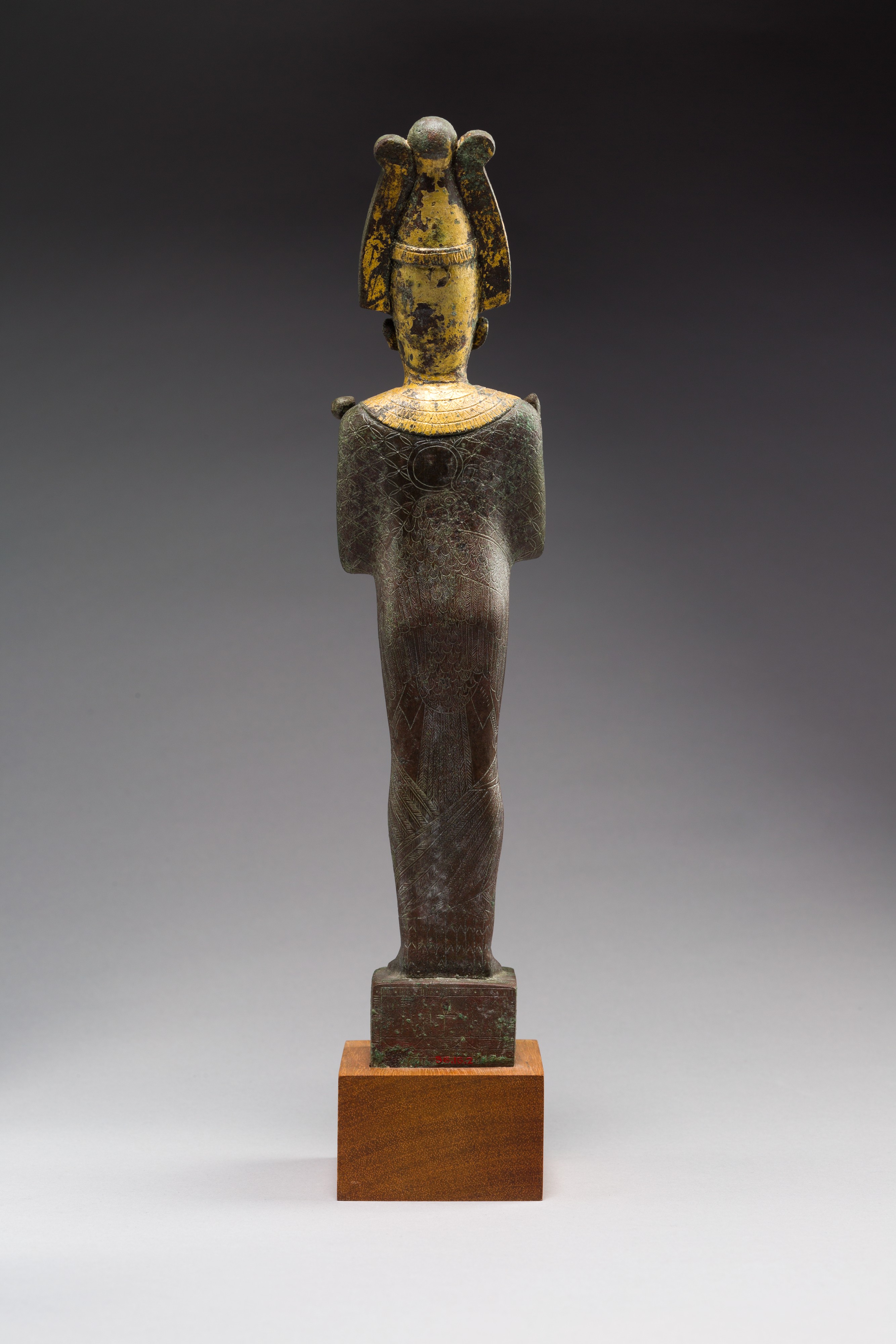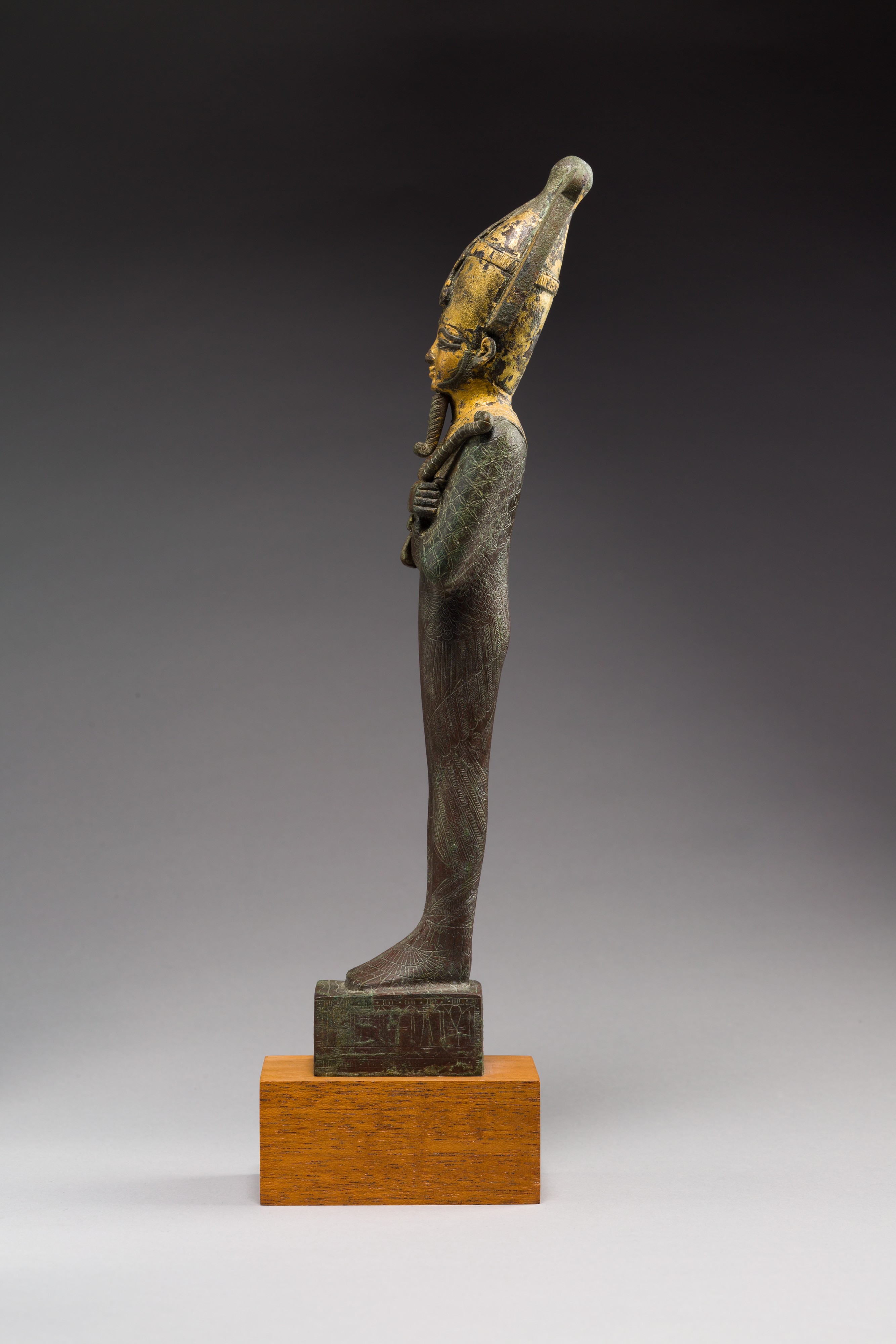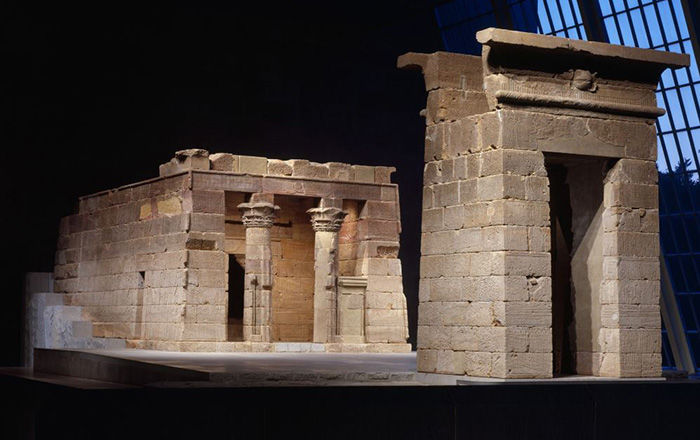Statuette of Osiris with the epithets Neb Ankh and Khentyimentiu, donated by Padihorpare
Late Period
This elaborate figure of Osiris is shown in his typical shrouded form, wearing his tall plumed crown and holding the crook and flail of kingship. These elements were overlaid with gold leaf, as was his face, neck, curled beard of divinity, broad festival collar, and pectoral, the latter of which bears an image of the solar bark. The upper part of the body is covered with a bead net pattern, and a divine falcon is depicted on the back, with its wings wrapped around the lower body. At the waist is an amulet in the form of a winged Ma'at, goddess of order, who holds ankh signs. A cartouche enclosing the name of Osiris adorns the knees, with two cobras wearing the red and white crowns, respectively, at its base. At the god's feet is a winged beetle with a sun disk in its forelegs and a shen ring in the rear legs. On the base are nine bows, representing the traditional“enemies" of Egypt, and the hieroglyphs ankh, djed, and was form a pattern around the sides and back.
On the front of the base the "Waab-Priest of Amun, Padihorpare" is shown twice, labeled as "adoring the god four times,”before cartouches containing the name of Osiris with in one case his epithet Neb Ankh (Lord of Life) and in the other Khentyimentiw (Presiding over the Westerners, i.e., the deceased who are buried in the West).
The figure was cast using the lost wax method, with the delicate lines of decoration engraved into the wax model.
For more information, see the Curatorial Interpretation below.
This image cannot be enlarged, viewed at full screen, or downloaded.
This artwork is meant to be viewed from right to left. Scroll left to view more.







